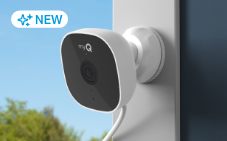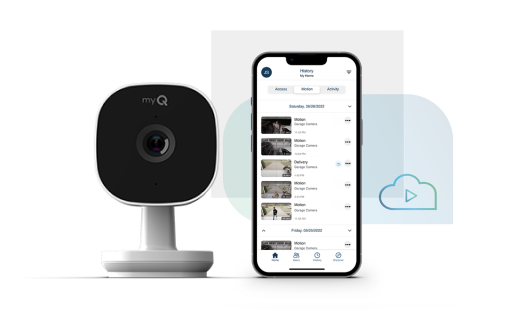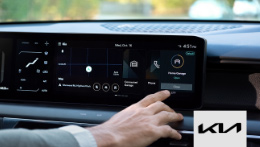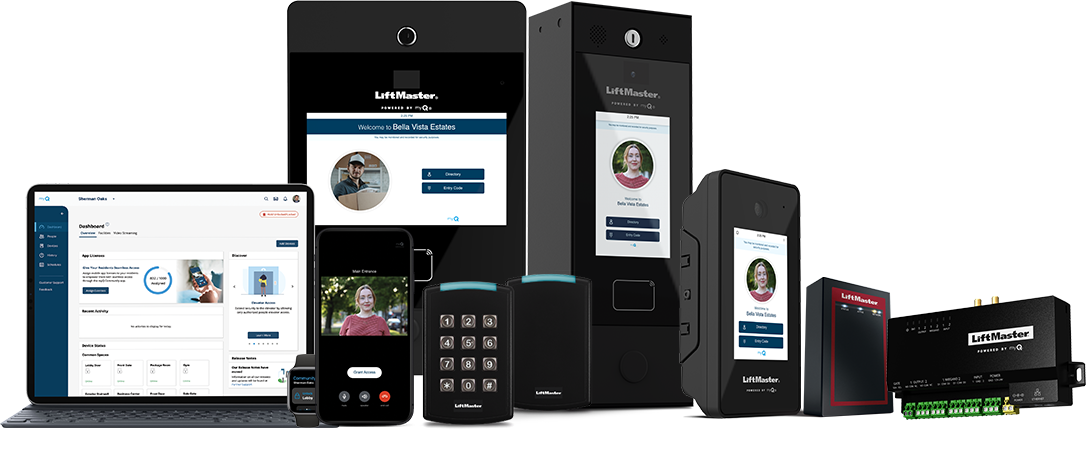What Is Bluetooth and How Does It Work?
What Is Bluetooth and How Does It Work?
Look around your home right now. Your phone, wireless headphones, smart speaker, and even your garage door opener likely share one thing in common: Bluetooth technology.
In fact, you're one of billions of people who interact with Bluetooth devices every day. As of 2023, a staggering five billion Bluetooth devices were shipped worldwide, and that number is expected to surge to 7.4 billion by 2028—growing at an impressive rate of 8% each year.
That said, what is Bluetooth and how does it work?
In this article, we’ll explain everything you need to know about this technology, from its surprising namesake to how it can connect your devices seamlessly for a more convenient wireless experience.
What Does Bluetooth Mean?
Bluetooth is a wireless system that allows devices like computers, phones, and electronic accessories to exchange data over short distances.
While the term “Bluetooth” might sound like a fancy technical word dreamed up in some Silicon Valley tech lab, its origin story is much more interesting.
The technology gets its name from King Harald "Bluetooth" Gormsonn, a 10th-century Danish ruler who united the tribes of Denmark and Norway in the year 958. Just as King Harald brought together different regions, Bluetooth technology unites various devices.
What began as a placeholder name perfectly captured this technology's spirit—and it stuck. Today, that legacy of unification lives on as Bluetooth connects billions of devices worldwide.
Bluetooth Key Features
Before you can fully know Bluetooth, what is it and how does it work, you must understand why Bluetooth technology has become indispensable for wireless connectivity.
Several key features set it apart.
The Two Types of Bluetooth Technology
Currently, two types of Bluetooth technology are available, each with a different purpose for integration:
- Classic Bluetooth – Classic Bluetooth is the standard, which forms a continuous and stable wireless connection. Headphones, speakers, and similar devices that need continuous data streaming without interference are typically fitted with this version of Bluetooth.
- Bluetooth Low Energy (BLE) – BLE is a more recent innovation designed for energy conservation. It maintains long-lasting connections for devices like fitness trackers and smart home sensors.
What Makes Bluetooth Special?
Bluetooth's widespread adoption is thanks to several key features that make it exceptionally valuable for daily use:
- Short-range connectivity – Most commercial Bluetooth devices operate within a radius of up to 33 feet. While this may seem like a limitation at first glance, Bluetooth’s shorter range contributes to its simplicity, making connectivity easily achieved within one or two steps so long as the device is nearby.
- Energy efficiency—Bluetooth transmits small amounts of data over short distances, making it incredibly energy-efficient. This helps conserve power in small, daily-use devices.
- Universal compatibility – Bluetooth is now available on most wireless devices as the standard method for connecting across short ranges. When you see a Bluetooth symbol, you can trust that it will work with other Bluetooth-enabled devices, regardless of the manufacturer.
Bluetooth has become such an integral part of our connected lives. But this still begs the question: What is Bluetooth how does it work exactly?
How Does Bluetooth Work?
When you think of wireless connectivity, you might first think of how your computer connects to Wi-Fi. While Bluetooth and Wi-Fi both offer wireless connections, they differ in how they work. Bluetooth, unlike Wi-Fi, allows devices to communicate directly with one another without needing an internet connection.
Device Pairing
Bluetooth works through “pairing,” which creates a secure connection between two devices. This two-way process requires devices to share information to quickly form connections when in range of each other. So, you might be wondering, does Bluetooth work without Wi-Fi ? The answer is yes—Bluetooth can operate independently, as it doesn’t rely on an internet connection like Wi-Fi does.
This is how the pairing process works:
- Device discovery – One device broadcasts its availability while the other scans for potential connections.
- Authentication – Once devices discover each other, they verify their identities.
- Information exchange – Paired devices create unique communication codes, marking the connection as “safe.”
- Connection establishment – Once authenticated, they form a secure connection that exists only between the two devices involved.
Once paired, your devices should not need to repeat the same process unless the pair is deleted. However, their connection will always remain unique.
Data Transmission
While Bluetooth does operate on a radio frequency, this isn’t the radio that comes from an old stereo. The frequency involved in Bluetooth technology has a much more specific purpose than charting the top 100.
Bluetooth operates in the 2.4 GHz frequency band, the same range many common wireless devices use. This specific frequency was chosen because it offers an ideal balance between range and data transfer speed while globally available. It’s like a highway specifically designed for short-range wireless communication. The road is wide enough to handle plenty of data but not so broad that it interferes with other wireless technologies.
The 2.4 GHz frequency band proves ideal for Bluetooth because it balances range and data transfer speed. While other frequency bands exist (like 5 GHz), the 2.4 GHz band provides just the right combination of characteristics for most Bluetooth applications.
What makes Bluetooth’s method of data transmission especially impressive is how it handles data transmission. Bluetooth technology uses a frequency hopping spread spectrum (FHSS), to ensure your devices stay connected, even when faced with interference from other wireless devices operating nearby.
Through these methods, Bluetooth can peacefully coexist with other wireless technologies like Wi-Fi, ensuring your devices maintain a stable connection. Bluetooth should not interfere with Wi-Fi, as long as both technologies are properly managed.
How myQ Uses Both Wi-Fi and Bluetooth for Smart Home Solutions
Every smart home should leverage the best aspects of the latest technology available. myQ smart home technology uses a hybrid approach with both Bluetooth and Wi-Fi to ensure reliable, secure access to your home’s entry points while maximizing convenience.
Our system utilizes Bluetooth’s strengths for initial device configuration. Direct device communication enables a quick, secure setup without needing to input Wi-Fi credentials and only allows for setup to occur when you’re physically present. Bluetooth connectivity also provides consistent access to your smart device’s connectivity when you’re within range, even without internet connectivity.
Meanwhile, myQ’s Wi-Fi connectivity allows you to control your smart home devices like garage door openers, smart locks, and cameras from anywhere at any time. You can also receive real-time updates about device activity through our secure app and live stream security camera footage straight to your connected devices.
Why Bluetooth Remains Essential in Everyday Tech
Bluetooth’s success stems from its advantages of convenience, power efficiency, and versatility.
Its simplicity means paired devices automatically connect when in range, making it ideal for everything from wireless earbuds to smart home controls. Energy efficiency, especially with Bluetooth Low Energy, enables constant connectivity while minimizing battery drain. Additionally, Bluetooth's versatility allows it to handle many different needs, from streaming audio through speakers to transmitting sensor data.
Bluetooth’s ability to work seamlessly across various devices and platforms has made it the go-to choice for countless applications, making our tech-driven lives more interconnected and efficient. Whether at home, at work, or on the go, Bluetooth’s reliability continues to enhance user experiences.
When to Use Bluetooth Technology
Understanding when Bluetooth is the best choice can help you make the most of all your devices.
Here are some scenarios where Bluetooth excels:
- Audio devices – Bluetooth has revolutionized how we experience sound, powering wireless headphones, speakers, and car audio systems. The technology provides high-quality audio streaming while maintaining mobility, which is perfect for listening to podcasts during your morning commute.
- Smartwatches and fitness trackers – These devices rely on Bluetooth's efficient data transmission to continuously sync with your smartphone, tracking your health metrics and delivering notifications without draining your battery.
- Laptops and tablets — Bluetooth enables responsive, cord-free operation of various peripheral accessories, such as wireless keyboards and mice. The technology's speed and simple pairing make it ideal for these interactive devices.
- Smart home control — Bluetooth's local device control and quick response times make it perfect for smart home applications. It provides reliable backup connectivity when Wi-Fi isn't available and simplifies device setup and configuration.
Beyond these common applications, Bluetooth's influence extends into numerous other areas. From healthcare devices to industrial equipment, Bluetooth technology continues to find new uses across various sectors. Its adaptability and reliability make it valuable in practically any field where wireless communication is needed, opening up endless possibilities for future applications.
Stay Connected With myQ
Now that you know how Bluetooth works, you can see how Bluetooth technology has come a long way from its early days of connecting wireless headsets to phones. Today, it's an essential part of the smart home ecosystem, working as King Harald once did to unite technologies to create more convenient and secure homes.
myQ's implementation of both Bluetooth and Wi-Fi capabilities showcases how these technologies can work together to provide the best possible user experience. From smart garage controls to security cameras and smart locks, Bluetooth and Wi-Fi connectivity conveniently stream real-time data about your smart home devices straight to your phone.
Are you ready to streamline your home’s connectivity? Explore myQ's collection of smart home devices and discover how our dual approach to connectivity can enhance your daily life, providing reliable control and peace of mind whether you're at home or out on the town.
Sources:
Statista. Bluetooth device shipments worldwide from 2015 to 2028. https://www.statista.com/statistics/1220933/global-bluetooth-device-shipment-forecast/
Bluetooth. The story behind how Bluetooth® technology got its name. https://www.bluetooth.com/about-us/bluetooth-origin/
Sphero. Bluetooth Low Energy Tech vs. Bluetooth. https://sphero.com/blogs/news/bluetooth-low-energy-vs-bluetooth
Bose. Understanding Bluetooth range: How far does Bluetooth reach? https://www.bose.com/stories/bluetooth-range-how-far-does-bluetooth-reach
Taming the Droid. Bluetooth pairing: everything you’ve always wanted to know. https://tamingthedroid.com/bluetooth-pairing-and-bluetooth-pairing-everything-youve-always
Flat Irons. Bluetooth Frequency: A Guide in 2025. https://flatirons.com/blog/bluetooth-frequency/
 Smart Cameras
Smart Cameras



 Fire Station
Fire Station
